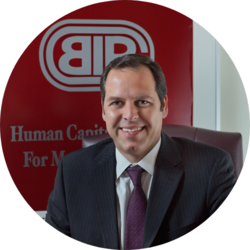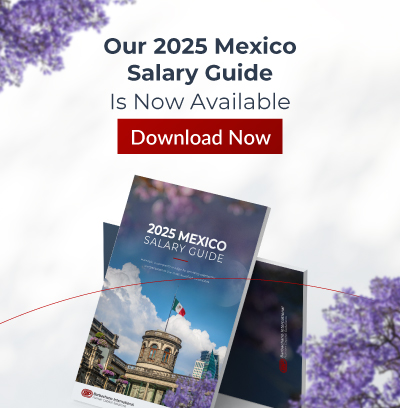
On paper, the candidate looks perfect. Their résumé is polished. They’ve held the right titles, led teams in your sector, and speak the language of your industry. You bring them on board with high expectations. But after a few months, something’s off. Performance is somewhat steady, not strong. The team seems flat. Strategy loses traction. What felt like a sure win now looks like a slow drain on progress.
This is a hiring mistake that many companies don’t see coming. It’s not about hiring someone unqualified. It’s about hiring based on short-term fit instead of long-term value. And that oversight can quietly cost your business millions.
The Hidden Cost of Executive Misfires
When an executive hire doesn’t deliver, the cost goes far beyond a severance check or recruitment fee. According to Harvard Business Review, up to 80 percent of employee turnover stems from bad hiring decisions. And when those decisions involve leadership roles, the ripple effects are deeper.
Think about what gets lost: stalled initiatives, disengaged teams, erosion of trust, and the time it takes to replace and reorient someone in a high-stakes role. A misaligned executive can set your company back a year or more, and few balance sheets account for that.
The root of the problem? A narrow definition of what a “qualified” leader looks like.
Familiarity Isn’t the Same as Readiness
There’s a common bias in executive hiring. We look for candidates who have done the exact job before, preferably in a similar company. On the surface, this feels like a safe bet. But it often backfires.
A leader’s past performance in a familiar environment doesn’t guarantee future success in yours. The best executives aren’t just repeaters of what’s been done. They’re thinkers and builders who know how to bring teams with them.
More and more leaders are rejecting linear careers in favor of broader experiences. As Forbes recently highlighted, professionals are prioritizing roles that offer growth, meaning, and challenge, not just status or title progression. These choices often result in unconventional résumés but stronger leadership instincts.
Why Some of the Best Leaders Look Different on Paper
Executives who have worked across industries or taken lateral moves often bring a wider lens to the table. They’re used to adjusting to new systems, leading unfamiliar teams, and working through pressure without losing focus.
The qualities that matter most in leadership—clarity, decisiveness, self-awareness, and the ability to build followership—aren’t always reflected in job titles or employer names. They’re revealed in how someone shows up during challenges, and how consistently they’ve built results through others.
If your hiring process relies solely on experience checkboxes, it might be filtering out the very people who could move your company forward.
What to Look For Instead
Leaders who make a lasting impact often share a few key traits.
- They think clearly under pressure. Instead of reacting to change, they bring order and focus.
- They know how to develop strong teams. Not just manage, but inspire people to do their best work.
- They care about outcomes that last. These are leaders who leave systems better than they found them—not just the numbers, but the people and the process.
- They lead with presence. They communicate in a way that builds trust and direction.
You won’t learn this from a résumé alone. You’ll find it through deeper interviews, strategic scenarios, and conversations with former team members.
The Real Meaning of Fit
“Culture fit” has become a popular phrase in hiring, but too often, it’s used as a reason to choose familiarity over progress. If everyone in your leadership team has a similar story, you’re probably missing perspective.
The most effective leaders don’t just blend in. They bring something new, while still respecting the DNA of your organization. They ask hard questions. They spot gaps others don’t. They know when to push and when to listen.
Hiring someone who challenges your thinking doesn’t disrupt culture. It strengthens it, if you’re ready to grow.
Building a Smarter Hiring Process
If you want your leadership hires to create long-term value, your hiring process has to change. That means:
- Looking beyond job history. Use business scenarios or case interviews to see how someone thinks.
- Prioritizing learning ability. Ask about failures and turning points, not just achievements.
- Expanding who’s involved. Include peers and potential direct reports in the process. You’ll learn more than you will from an executive panel alone.
- Using assessment tools that reveal leadership style and decision-making, not just personality.
These steps take more time, but they protect your organization from surface-level decisions and help you build a team that can lead with consistency and purpose.
What Really Moves a Business Forward
It’s not the loudest résumé that drives results. It’s the leader who builds clarity in chaos. The one who earns trust quickly. The one who stays steady when pressure rises and helps others stay grounded too.
The most expensive hire isn’t the one you pass on. It’s the one you bring in because they felt like a perfect fit, only to realize six months later they were never equipped for where you were headed.
Every executive hire is a choice about who you trust with your future. And that choice should be made with care, depth, and a clear understanding of what kind of leadership your business truly needs.

By Fernando Ortiz-Barbachano
President & CEO of Barbachano International
Barbachano International (BIP) is the premier executive search and leadership advisory firm in the Americas with a focus on diversity & multicultural target markets. Since 1992, BIP and its affiliates have impacted the profitability of over 50% of Fortune 500 Companies. BIP has been recognized by Forbes as Americas’ Best Executive Search Firms and currently ranks #10 and #3 on the West Coast.

